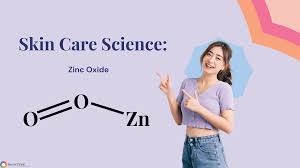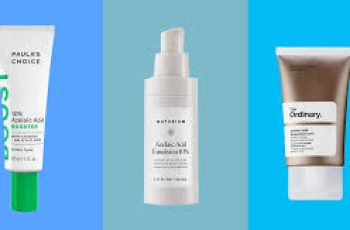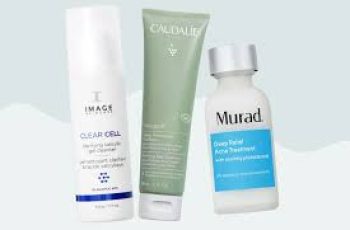
The Science of Zinc Oxide in Skin Care
Zinc Oxide in Skin Care
Zinc oxide is one of the most effective sun protection ingredients in skin care products today. This naturally-occurring mineral compound offers a range of benefits for maintaining healthy, youthful skin. In this in-depth blog post, we’ll explore everything you need to know about zinc oxide in skin care and how to incorporate it into your routine. To get the perfect custom skin care routine for you, take the Baumann Skin Type quiz for free today!
What is Zinc Oxide?
Zinc oxide is composed of zinc and oxygen atoms bonded together. It is a fine, white powder in its natural state. While zinc itself is an essential trace element for the human body, zinc oxide has unique properties when used in skin care formulations.
Most topically applied zinc oxide sits on the outermost layer of skin rather than absorbing into the deeper layers. This is the key to understanding its mechanisms and benefits.
In skin care, zinc oxide is primarily used as a broad spectrum physical sunscreen ingredient. It protects against both UVA and UVB radiation by reflecting and scattering the light waves before they can cause damage to skin cells.
Before we get started, here are a few of my favorite physical sunscreens that I’d like to highlight:
The science of zinc oxide in skin care
The properties of zinc oxide are well studied, as it is an important mineral in hundreds normal bodily functions. New research on the possible benefits or shortcomings of zinc oxide in topical products is happening all the time.
We do know that zinc oxide provides additional skin benefits beyond sun protection, which we’ll explore more below.
Zinc oxide for sun protection
Zinc oxide is the single most common ingredient in mineral sunscreens. Thanks to its mineral composition and poor ability to absorb into skin, zinc oxide effectively blocks UVB rays (wavelengths 290-320 nm) and shortwave UVA rays (320-340 nm). This prevents sunburn, cell mutations, early skin aging, and skin cancer.
Zinc oxide is superior at blocking long wave UVA1 rays (340-400nm) compared to the mineral titanium dioxide. It offers very broad spectrum protection.
Studies have found that in addition to reflecting radiation, it also absorbs a large amount of it.
Zinc oxide for melasma
By providing UV protection, zinc oxide helps prevent melasma and post-inflammatory hyperpigmentation, especially in those prone to discoloration. The UV rays that trigger excess melanin production are blocked before reaching skin cells. Additionally, it is well known that zinc supplements taken orally can treat existing melasma. Good sun protection practices are key to any hyperpigmentation regimen.
Zinc oxide and blue light
Zinc Oxide and Blue Light
Emerging research shows that zinc oxide may defend skin against visible blue light from digital devices and fluorescent lighting that can contribute to premature aging over time. More studies are still needed, but the mineral shows promise for neutralizing blue light.
Antimicrobial effects of zinc oxide
While most formulations of zinc oxide do not penetrate skin but can stay on the surface to offer antimicrobial benefits as nanoparticle zinc oxide has shown antibacterial properties in studies. This means that in most cases, zinc oxide will not directly treat acne, and even when in its nano particle form it is not potent enough to prevent acne on its own.
Is zinc oxide safe?
Zinc oxide is considered safe in skin care. Organizations like the EWG rate it as a 1-3 which is safe in most formulations. The CIR has also described it as safe. (10) The reason it is not safe in all formulations is because zinc oxide formulated as nano particles can somewhat be absorbed into the skin. Zinc is unlike some chemical sunscreen filters, which can potentially cause irritation, allergies, or penetration into the bloodstream in some individuals. As a physical blocker that sits on skin’s surface, zinc oxide is less likely to cause such reactions.
Make sure to wash off any thick sunscreens at the end of the day so they don’t clog your pores. It is not the zinc oxide itself that is comedogenic, but rather some ingredients it can be sometimes used alongside.
How zinc oxide products are made
How zinc oxide products are made
In order to provide the above benefits, zinc oxide must be properly formulated in skin care products. Factors like how the zinc oxide is shaped, coated, and what other ingredients it is mixed together with change how it works. Here’s some of the science behind that claim:
Zinc oxide particle sizes
Zinc oxide is produced in different particle sizes depending on its purpose, which affects its properties and performance:
Nanoparticle zinc oxide contains the smallest particles less than 0.2 μm in size. This allows them to appear transparent on the skin without leaving a white color behind. However, there are concerns that nanoparticles may potentially absorb into the skin.
Micronized zinc oxide particles are slightly larger between 0.2-0.3 μm. This size minimizes light scattering for transparency, while remaining too large to penetrate deeply into the skin. Micronized zinc oxide offers the best of both worlds.
Larger, non-micronized zinc oxide particles are around 0.5-1 μm in size. These tend to leave a thicker white residue on the skin, but are sometimes used in natural or mineral makeup products.
Bulk zinc oxide particles are greater than 1 μm and appear visibly white on the skin. While they provide effective UV protection, the white residue is considered cosmetically unacceptable by most consumers.
The smallest nanoparticles provide the most elegant finish, but micronized zinc oxide balances effectiveness with safety by being too large to be absorbed into the skin. The best size for you depends on your skin concerns. At the end of the day, the best sunscreen for you is one you’ll use consistently.
Zinc oxide coating
Different types of coatings are applied to zinc oxide particles to enhance certain properties:
Silicone, dimethicone, and polymer coatings help make zinc oxide smoother, more cosmetically elegant, and water resistant while boosting UV protection. They also minimize photoreactivity.
Lecithin, glycerin, and alumina provide hydration benefits while decreasing agglomeration of particles.
It is most common for larger particle sized zinc oxide to be coated than smaller particles.
Mixing zinc oxide with other ingredients
Mixing zinc oxide with other mineral sunscreen ingredients
While zinc oxide is great at absorbing and reflecting a decent range of radiation, it is most effective when mixed with other ingredients like some chemical sunscreen components or other minerals like titanium oxide or iron oxide.
To make sure all the ingredients in your sunscreen are working together to improve your skin health, take this quiz (Coming Soon!) to find the perfect sunscreen for you!
One exciting ingredient to use alongside zinc oxide is diamonds! Products like Pavise Dynamic Age Defense use the highly reflective surfaces of diamond dust to drastically increase to radiation protection of their sunscreen. I highly recommend this product. For our full collection of sunscreens and SPF products, click here!
Pavise uses diamond core technology which is zinc bound to diamonds to provide sun protection along with antioxidants in a sheer, vegan, marine safe sunscreen.
Zinc oxide vs Titanium oxide
Like zinc oxide, titanium dioxide sits atop the skin as a physical UV filter. They do, however, have some differences. Here’s how the two mineral sunscreen ingredients stack up:
Zinc oxide provides slightly better UVA protection, titanium dioxide excels at UVB defense
Titanium dioxide is more photoreactive, zinc oxide is more stable
Titanium dioxide has a higher skin penetration risk
Zinc oxide is safer and causes less irritation overall
Beyond UV rays, zinc oxide also protects against blue light and discoloration
For the most well-rounded benefits, a combination of both minerals is ideal. But zinc oxide’s versatility makes it stand out as an essential skin care ingredient.
What to know about zinc oxide
With science supporting its effectiveness and safety, zinc oxide is proving to be more than just a physical sunscreen.
Look for zinc oxide in sunscreens as well as moisturizers, serums, and masks to take advantage of its diverse benefits. Your skin will thank you!
As always, the best skin care regimen contains products aligned with your unique Baumann Skin Type. We can provide personalized recommendations with zinc oxide tailored for your needs. Take the quiz today to start the journey towards healthy skin!


